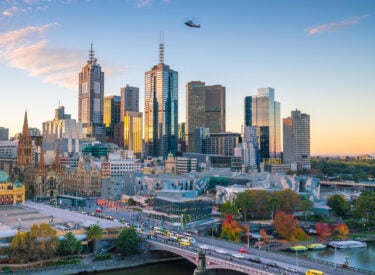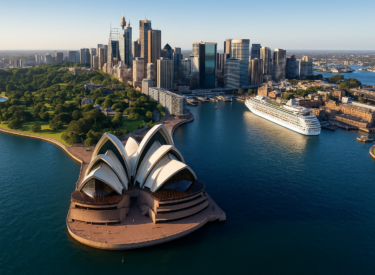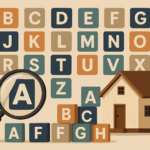
Key takeaways
House rents stabilise: Combined capital city house rents have remained flat for five consecutive quarters, the longest period of stability since 2014-16. Melbourne, Adelaide, Canberra, and Sydney all saw zero house rent growth.
Unit rent surge fades: Unit rents across combined capitals have also flatlined for two consecutive quarters, a first in a decade. Perth saw its first unit rent decrease since 2017, while Hobart saw its first decrease in over a year.
Brisbane and Darwin buck the trend: Both house and unit rents grew this quarter in Brisbane and Darwin. Darwin recorded the sharpest quarterly increases - 5.9% ($40) for houses and 3.1% ($17) for units, reclaiming its spot as the second-most expensive city to rent a house.
Landlords maintain the upper hand: Vacancy rates have inched higher, but remain below 2% in all capitals, keeping the rental market strongly in landlords’ favour.
After three relentless years of rent hikes that pushed many tenants to their financial limits, Australia’s rental market has finally hit pause.
But make no mistake, this isn’t a sign that tenants are suddenly getting relief.
It’s more like the market has reached its ceiling.
According to Domain’s Chief of Research and Economics, Dr Nicola Powell:
“Australia’s rental market has entered a new phase: record highs but no further growth.”
In other words, rents haven’t fallen, they’ve just stopped climbing, for now.
The big picture: from acceleration to stabilisation
Accordong to Domain's Rental Report, house rents in the combined capitals have now been unchanged for five consecutive quarters , the longest stretch of stability since 2014–2016.
That’s left annual growth at zero for two consecutive quarters, something we haven’t seen in a decade.
Table 1: House rents, quarterly and annual changes
| HOUSES | MEDIAN RENTAL ASKING PRICE | ||||||
| Capital City | Sep-25 | Jun-25 | Sep-24 | Quarterly change | Annual change | Status |
| Sydney | $780 | $780 | $770 | 0.0% | 1.3% | Record (steady) |
| Melbourne | $580 | $580 | $580 | 0.0% | 0.0% | Record (steady) |
| Brisbane | $660 | $650 | $625 | 1.5% | 5.6% | Record (new) |
| Adelaide | $620 | $620 | $600 | 0.0% | 3.3% | Record (steady) |
| Perth | $700 | $700 | $660 | 0.0% | 6.1% | Record (steady) |
| Canberra | $700 | $700 | $680 | 0.0% | 2.9% | Record (steady) |
| Darwin | $720 | $680 | $680 | 5.9% | 5.9% | Record (new) |
| Hobart | $580 | $575 | $550 | 0.9% | 5.5% | Record (new) |
| Combined Capitals | $650 | $650 | $650 | 0.0% | 0.0% | Record (steady) |
Units, which had been carrying the affordability overflow from houses, are now showing the same trend.
They’ve flatlined for two quarters, with annual growth slowing to just 3.2%, the weakest since 2021.
Table 2: Unit rents, quarterly and annual changes
| UNITS | MEDIAN RENTAL ASKING PRICE | ||||||
| Capital City | Sep-25 | Jun-25 | Sep-24 | Quarterly change | Annual change | Status |
| Sydney | $750 | $740 | $715 | 1.4% | 4.9% | Record (new) |
| Melbourne | $575 | $575 | $550 | 0.0% | 4.5% | Record (steady) |
| Brisbane | $630 | $620 | $590 | 1.6% | 6.8% | Record (new) |
| Adelaide | $520 | $520 | $495 | 0.0% | 5.1% | Record (steady) |
| Perth | $600 | $620 | $575 | -3.2% | 4.3% | $20 lower than Jun-25 record |
| Canberra | $580 | $580 | $550 | 0.0% | 5.5% | Record (steady) |
| Darwin | $580 | $563 | $550 | 3.1% | 5.5% | Record (new) |
| Hobart | $490 | $500 | $460 | -2.0% | 6.5% | $10 lower than Jun-25 record |
| Combined Capitals | $650 | $650 | $630 | 0.0% | 3.2% | Record (steady) |
So yes, rents are still painfully high, but the pace of increase has clearly broken.
This marks a significant turning point in the rental cycle.
Table 3: House and unit combined rental vacancy rates
| HOUSE AND UNIT COMBINED | RENTAL VACANCY RATES | |||||
| Capital City | Sep-25 | Jun-25 | Sep-24 | Quarterly percentage point change | Annual percentage point change |
| Sydney | 0.9% | 1.1% | 1.1% | -0.2 ppt | -0.2 ppt |
| Melbourne | 1.4% | 1.3% | 1.3% | 0.1 ppt | 0.1 ppt |
| Brisbane | 0.7% | 0.7% | 0.9% | 0.0 ppt | -0.2 ppt |
| Perth | 0.5% | 0.5% | 0.5% | 0.0 ppt | 0.0 ppt |
| Adelaide | 0.5% | 0.5% | 0.4% | 0.0 ppt | 0.1 ppt |
| Hobart | 0.2% | 0.4% | 0.5% | -0.2 ppt | -0.3 ppt |
| Canberra | 1.3% | 1.1% | 1.6% | 0.2 ppt | -0.3 ppt |
| Darwin | 0.4% | 0.3% | 0.7% | 0.1 ppt | -0.3 ppt |
| Combined Capitals | 0.9% | 0.9% | 1.0% | 0.0 ppt | -0.1 ppt |
| Combined Regionals | 0.7% | 0.8% | 0.8% | -0.1 ppt | -0.1 ppt |
| National | 0.9% | 0.9% | 0.9% | 0.0 ppt | 0.0 ppt |
City by city: the story behind the numbers
Each capital city is telling a slightly different version of the same story: high rents, easing momentum, and tenants hitting affordability limits.
Sydney
Sydney’s house rents held steady at $780 per week through the September quarter, the first time in six years they haven’t risen during this period.
That’s brought annual growth down to just 1.3%, the weakest since 2020.
It’s clear that tenants simply can’t stretch any further.
Units, however, are still inching higher: up 1.4% to a record $750 per week.
The gap between houses and units has narrowed to just $30, the smallest in half a decade.
It’s a strong signal that renters are shifting toward apartments in search of relative affordability.
Even so, Sydney’s vacancy rate remains razor-thin at 0.9%, underscoring that the city’s housing pressures are far from resolved.
Melbourne
Melbourne’s house rents are holding firm at $580 per week, unchanged for five consecutive quarters, its longest period of stability since 2011–2012.
Annual growth is flat, and Melbourne now ties with Hobart as the cheapest city to rent a house.
Unit rents also remain stuck at $575 per week, with growth at 4.5%, its weakest in three years.
The price gap between houses and units has shrunk to just $5, practically indistinguishable.
Vacancy rates have nudged up slightly to 1.4%, the highest since 2022, suggesting supply is improving, but the market still isn’t balanced.
Brisbane
Brisbane is one of the few outliers.
House rents climbed 1.5% to $660 per week, while units rose 1.6% to $630 per week, both at record highs.
But these are far more modest increases than the double-digit surges we saw from 2021 to 2023.
It’s becoming clear that Brisbane, too, is approaching its affordability ceiling.
Vacancy rates remain at an extremely tight 0.7%, ensuring competition for rentals remains fierce.
Adelaide and Canberra
In both Adelaide and Canberra, rents have plateaued for the first time in years.
Adelaide house rents have now been flat for two consecutive quarters, a five-year first, holding at $620 per week.
Unit rents are also unchanged at $520 per week, the first stable stretch in almost two years.
Canberra tells a similar story: house and unit rents are both stuck at record highs ($700 and $580 per week, respectively).
The city’s vacancy rate has edged up to 1.3%, still tight, but slightly more forgiving than last year.
Why the pause? A market at its limits
Several forces are converging to keep rents high but stop them from rising further:
-
Affordability fatigue: After years of rent increases, many tenants simply can’t pay more. Incomes haven’t kept up, and renters are reaching their financial limits.
-
Population growth cooling: Migration-fuelled demand, a major driver in recent years, has eased slightly.
-
More investor activity: Higher yields and a stabilising interest rate outlook have encouraged some investors back into the market, slowly boosting rental supply.
-
Policy support for first-home buyers: Programs like the expanded First Home Guarantee are helping some renters transition into ownership, gradually easing rental demand.
Dr Powell summed it up neatly: after three years of relentless rent hikes, “growth has stalled – houses stopped first, now units have followed.”
What it means for tenants and investors
For tenants, the message is bittersweet.
Rents remain at record highs, but at least they’ve stopped climbing for now.
Relief is limited, but stability offers predictability, something renters haven’t had in years.
For investors, this phase of the cycle calls for realism.
The days of rapid rent gains are over, at least for the moment.
But strong demand and tight vacancy rates mean yields should hold firm.
Markets like Brisbane and Darwin, where rents are still rising, may offer short-term upside, but most capitals are entering a “high but stable” phase.
In other words, the rental market isn’t collapsing, it’s catching its breath.
The bottom line
Australia’s rental market has shifted gears.
After years of rapid escalation, we’re entering a new chapter: one defined by high rents, low vacancies, and limited growth potential.
This pause isn’t the start of a downturn; it’s a sign of a maturing cycle.
Rents have reached the limits of affordability, and unless supply meaningfully increases, we’re unlikely to see major drops, just a long plateau at painful levels.
For investors, this reinforces the importance of focusing on quality assets in locations with sustainable demand drivers, rather than chasing short-term rent growth.
And for tenants, it’s a small reprieve, though not yet a reason to celebrate.














